What Is a Foodborne Illness?
Foodborne illness is a disease that causes infection or poisoning in humans due to the ingestion of foods containing toxic and hazardous substances into the human body. Foodborne illness usually causes gastrointestinal discomfort, nausea and vomiting, severe diarrhea, systemic infection and even death, and accounts for a large proportion of morbidity and mortality worldwide. Because of their continuing threat to public health, it has become a major obstacle to global socio-economic development. Up to now, more than 200 different foodborne diseases have been discovered. The most serious cases usually occur in the elderly, children or people with impaired immune system function. There are many factors that cause foodborne illness, and foodborne pathogens are one of the most important factors.
Foodborne Pathogen
Foodborne illnesses are usually caused by eating food contaminated with bacteria and/or their toxins, parasites, viruses, chemicals or other agents. Among them, foodborne pathogens are the main cause of foodborne diseases. Foodborne pathogens are mainly bacteria, viruses and parasites found in food.
Bacterial
Bacteria are the most common cause of foodborne illness. Bacterial foodborne illness usually occurs in summer due to high temperatures and high humidity, which provides a good living environment for bacterial growth and production. There are two types of bacterial foodborne diseases: poisoning and infection. Foodborne poisoning is caused by ingestion of foods that contain bacterial toxins. Common bacteria that produce toxins include Staphylococcus aureus and Clostridium botulinum. Food-borne infections are caused by ingestion of foods that contain live bacteria (such as Salmonella or Listeria), which can multiply in the host and cause disease.
Staphylococcus Aureus
Staphylococcus aureus is a Gram-positive, round-shaped bacterium that is a member of the Firmicutes. It is often positive for catalase and nitrate reduction and is a facultative anaerobe that can grow without the need for oxygen. The bacterium can produce staphylococcal enterotoxins (SEs) which is causes of vomit after intake. SEs belong to the broad family of pyrogenic toxin superantigens. Superantigens (SAgs), unlike conventional antigens, do not need to be processed by antigen-presenting cells (APC) before being presented to T cells. They can directly stimulate T cells by cross-linking major histocompatibility complex (MHC) class II molecules on APC with the variable portion of the T-cell antigen receptor β chain (TCR Vβ) or the T-cell antigen receptor α chain for SE (TCR Vα), thereby inducing polyclonal cell proliferation. SAg-binding sites lie outside the peptide-binding groove and therefore do not depend on T-cell antigenic specificity but rather on the Vβ and/or Vα region of the TCR. This leads to activation of a large number of T cells followed by proliferation and massive release of chemokines and proinflammatory cytokines that may lead to potentially lethal toxic shock syndrome. The SAgs can interact with epithelial cells leading to their transepithelial transport, cell activation and induction of inflammatory state. First, most SAgs have dose-dependent capacity to cross the intestinal wall and produce a local and systemic action on the immune system. This transport is favoured by the production of pro-inflammatory cytokine-like elements. A protein motif highly conserved among SE and located in the amino acids 120–130 and 144–161, for TSST1 and SE respectively, has been identified and is involved in this transcytosis. Stimulation of intestinal epithelial cells by SEA also induces an increase in the concentration of intracellular calcium via the release of cellular calcium reserves leading to their activation. This mechanism involves a nitric oxide synthase inducible by TNF-α. Finally, superantigenic stimulation of intestinal epithelial cells induces an inflammatory response. The activation of T84 cells (a human epithelial cell line) by SAgs induces the production of monocyte chemoattractant protein 1 (MCP-1) and regulated on activation normal T-cell expressed and secreted protein (RANTES). These chemokines promote the recruitment of immune mononuclear cells, which may explain the role of the SAgs in the pathogenesis of inflammatory gastrointestinal diseases.
In contrast to other bacterial enterotoxins, specific cells and receptors in the digestive system have not been clearly linked to oral intoxication by a SE. Sugiyama & Hayama (1965) suggested that SEs stimulate the vagus nerve in the abdominal viscera, which transmits the signal to the emetic centre. Supporting this idea, receptors on vagal afferent neurons are essential for SEA-triggered emesis. In addition, SEs are able to penetrate the gut lining and activate local and systemic immune responses. The diarrhoea sometimes associated with SE intoxication could be attributed to the inhibition of water and electrolyte reabsorption in the small intestine. In an attempt to link the two distinct activities of SEs, i.e., superantigenicity and emesis, it has been postulated that enterotoxin activity could facilitate transcytosis, enabling the toxin to enter the bloodstream and circulate through the body, thus allowing the interaction with APC and T cells that leads to superantigen activity. In this way, circulation of SEs following ingestion of SEs, as well as their spread from an S. aureus infection site, could have more profound effects upon the host than if the toxin remains localized.
Clostridium Botulinum
This organism produces toxins that cause botulism, a life-threatening disease that prevents air from entering and leaving the lungs by inhibiting the respiratory muscles. Source: Home canned food is not made properly; honey should not be fed to children under 12 months.
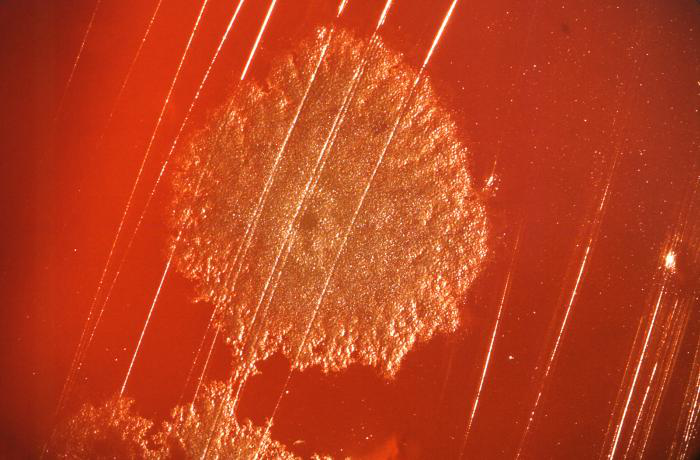
Salmonella
Common bacteria that cause diarrhea are also the most common cause of foodborne death. In the United States, Salmonella causes 1.4 million foodborne illnesses each year. Source: unprocessed and uncooked eggs, uncooked poultry and meat, fresh fruits and vegetables, and unpasteurized dairy products.
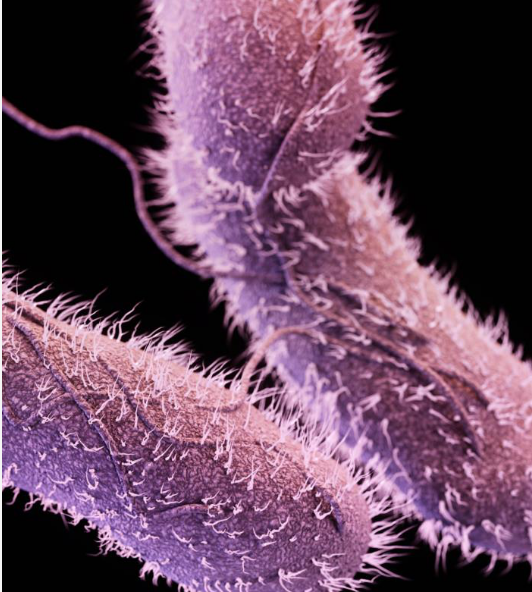
Listeria Monocytogenes
Listeria monocytogenes can cause listeriosis, a serious condition for pregnant women, newborns and adults with weakened immune systems. Source: Unpasteurized dairy products, including soft cheese, sliced deli meat, smoked fish, hot dogs and cooked salads (ie eggs, ham, seafood and chicken salad)
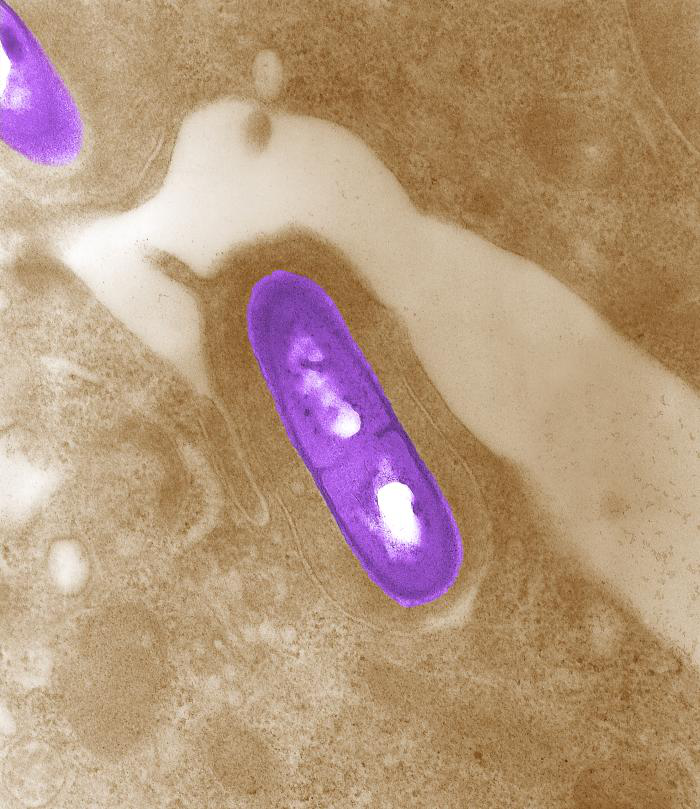
Virus
The virus is essentially a microparticle coated with a protein coat and propagates only in other living cells. Therefore, they cannot survive long-term outside the host. Although more than 100 enteroviruses have been found to cause foodborne illness, the most common foodborne viral pathogens are hepatitis A, rotavirus, astrovirus and norovirus. These viruses can easily spread from one food to another, and bivalve molluscs, such as cockroaches, cockroaches, mussels, and oysters, are particularly susceptible to spreading the virus. Moreover, common antibiotic drugs are difficult to treat diseases caused by viral infections.
Norovirus
The main viral cause of diarrhea in the United States. Poor sanitation causes Norovirus to spread easily from person to person and from infected to food. Source: Any food contaminated by people infected with this virus.
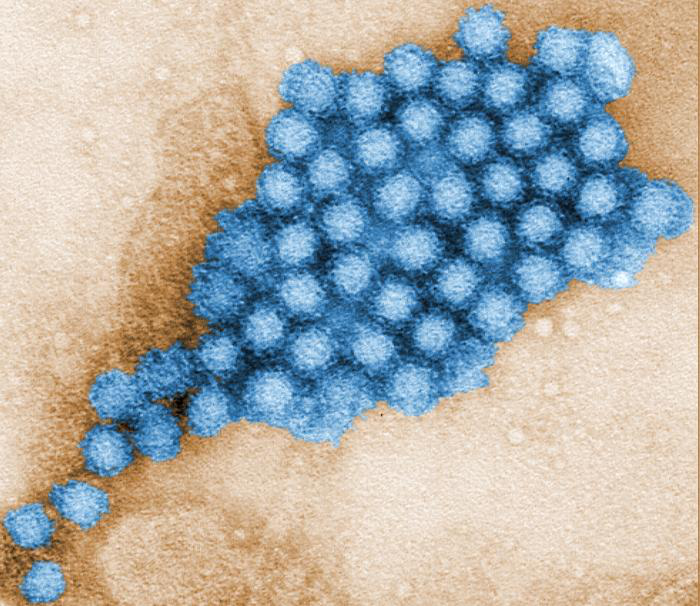
Parasite
A parasite is an organism that acquires nutrients and protection from an organism called a host. Like viruses, they do not proliferate in food, can only survive and multiply in tissues and organs of infected human and animal hosts, and are excreted by feces. They can spread by eating contaminated food and water, or by putting anything that touches the infected person or animal droppings into the mouth. Parasites vary in size and size, ranging from tiny single-celled microorganisms (protozoa) to larger multicellular worms (worms). Among them, the most common foodborne parasites are Giardia, Cryptosporidium, Cyclospora, Toxoplasma gondii.
Toxoplasma Gondii
A parasite that causes toxoplasmosis, a very serious disease that can cause central nervous system disorders, especially in children with mental retardation and visual impairment. Pregnant women and people with weakened immune systems are at higher risk. Source: Raw pork or uncooked pork.
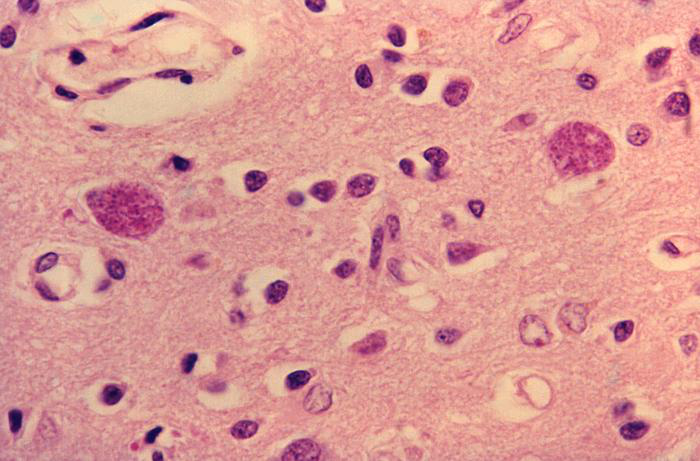
How to Prevent the Occurrence of Foodborne Diseases?
Foodborne illnesses can have different pathogens, as well as different pathologies and clinical manifestations. However, a common feature of this type of disease is the disease through eating behavior, which provides an effective way to prevent such diseases: Strengthen food hygiene supervision and management, advocate reasonable nutrition, control food pollution, and improve food hygiene quality. It can effectively prevent the occurrence of foodborne diseases. In order to prevent the occurrence of foodborne diseases, microbial pathogen detection in food is a necessary means to prevent and identify health and safety related problems. By developing food-borne pathogens detection in foods, large-scale foodborne diseases can be effectively prevented. Therefore, the use of foodborne pathogen detection kits for food production, processing and transportation is an essential part of the assessment.
Creative Diagnostics is able to offer a variety of foodborne pathogen-associated antigens and antibodies for foodborne pathogen detection kit development. These antigens and antibodies have been demonstrated to be used in a variety of immunoassays and as a reliable reagent development material.
| Species | Target | Cat. No. | Product Name | Application |
| Hepatitis A virus | HAV HM175 | DMAB3489 | Anti-HAV MAb, Clone CDI869 | ELISA, IHC |
| HAV CF53 | DMAB3490 | Anti-HAV MAb, Clone A819 | ELISA, IF, IHC | |
| HAV HM175 | DPAB0224 | Anti-HAV PAb | ELISA | |
| HAV | DAG540 | HAV VP3 [GST] | ELISA, WB | |
| HAV | DAG1448 | HAV P2C-P3A | ELISA, WB | |
| Campylobacter jejuni | C. jejuni/C. coli | CABT-L3146 | Mouse Anti-Campylobacter jejuni / Campylobacter coli Mab, clone D12057N | LFIA (Det) |
| C. jejuni/C. coli | CABT-L3147 | Mouse Anti-Campylobacter jejuni / Campylobacter coli Mab, clone D12058N | LFIA(Cap) | |
| C. jejuni | DAG4688 | C. jejuni | SDS-PAGE, ELISA | |
| C. jejuni | DAGA-3031 | Recombinant C. Jejuni Omp protein [His] | CON, LF, ST | |
| Escherichia Coli | E. coli O157 LPS | DCAB-TJ076 | Magic™ Anti-E. coli O157 MAb, Clone C946N | EIA, IF, ELISA(Det) |
| E. coli O157 LPS | DCAB-TJ078 | Magic™ Anti-E. coli O157 MAb, Clone C948N | EIA, IF, ELISA(Cap) | |
| E. coli Enterotoxin | CABT-B8711 | Magic™ Anti-E. coli Enterotoxin LT MAb, clone C2032N | ELISA (Cap) | |
| E. coli Enterotoxin | CABT-B8712 | Magic™ Anti-E. coli Enterotoxin LT MAb, clone C2035N | ELISA (Det) | |
| E. coli STp peptide | CABT-B8713 | Magic™ Anti-E. coli Enterotoxin STp MAb, clone C2037N | ELISA (Cap) | |
| E. coli STp peptide | CABT-B8714 | Magic™ Anti-E. coli Enterotoxin STp MAb, clone C2036N | ELISA (Det) | |
| E. coli O157 | DAGA-3082 | Recombinant E. coli O157 VT1 [His] | Control, Immunogen | |
| E. coli Heat shock protein | DAG3447 | E. coli Heat shock protein 1 | N/A | |
| Legionella | L. pneumophila | DCABY-4615 | Magic™ Anti-L. pneumophila MAb, Clone 702230 | ELISA(Cap), IF, IHC, WB |
| L. pneumophila | DCABY-4746 | Magic™ Anti-L. pneumophila MAb, Clone N00092042 | ELISA(Det), IF, IHC, WB | |
| L. pneumophila | DAGA-165 | L. pneumophila Antigen | ELISA | |
| L. pneumophila | DAGA-164 | Recombinant L. pneumophila Oligoribonuclease(orn) | N/A | |
| Salmonella | Mixture of 4 Salmonella serotypes | DCAB-TJ059 | Magic™ Anti-Salmonella Group A, B, C, D, E, F and G MAb, Clone C454N | EIA, ELISA(Cap) |
| Mixture of 4 Salmonella serotypes | DCAB-TJ062 | Magic™ Anti-Salmonella Group A, B, C, D, E, F and G MAb, Clone C458N | EIA, IF, ELISA(Det) | |
| S. paratyphi | DAGA-3050 | Native Salmonella paratyphi B antigen | ELISA, LFIA | |
| Shigella | S. Flexneri NCTC 9729 | DMABT-51566MS | Anti-S. flexneri type 6 MAb, Clone 407/406 | IHC, ELISA, FC, WB |
| Mixture of S. boydii, S. flexneri and S. dysenteriae | DPATB-H82561 | Anti-Shigella PAb | WB, ELISA, IHC-Fr, ICC/IF | |
| Shigella Flexneri | DAGA-3027 | Native Shigella Flexneri | CON, LF | |
| Bacillus anthracis | B. anthracis Anthrax Lethal Factor | DMAB3020 | Anti-B. anthracis Lethal Factor Mab, Clone C744M | ELISA(Det) |
| B. anthracis Anthrax Lethal Factor | DMAB3021 | Anti-B. anthracis Lethal Factor Mab, Clone C415M | ELISA(Cap) | |
| B. anthracis Edema Factor | DAGB168 | B. anthracis Edema Factor | ELISA | |
| B. anthracis Lethal Factor | DAGB170 | B. anthracis Lethal Factor | Cyt | |
| Clostridium | C. difficile toxin B | DCABY-4701 | Magic™ Anti-C. difficile Toxin B MAb, Clone N0622425 | ELISA(Cap) |
| C. difficile toxin A | DCABY-4700 | Magic™ Anti-C. difficile Toxin A MAb, Clone N0622422 | ELISA(Det) | |
| C. difficile toxin A | DCAB-TJ124 | Magic™ Anti-C. difficile Toxin A MAb, Clone CEJ666 | EIA, ELISA(Cap) | |
| C. difficile toxin A | DCAB-TJ102 | Magic™ Anti-C. difficile Toxin A MAb, Clone C2508N | EIA, ELISA(Det) | |
| C. difficile toxin B | DAG2633 | C. difficile Toxin B, TcdB (aa 1 – 543) [His] | N/A | |
| C. difficile toxin A | DAGH048 | C. difficile Toxin A | N/A | |
| Listeria | L. monocytogenes p60 | DCAB-TJ106 | Magic™ Anti-L. monocytogenes p60 MAb, clone C2635N | EIA, ELISA(Cap) |
| L. monocytogenes p60 | DCAB-TJ108 | Magic™ Anti-L. monocytogenes p60 MAb, clone C2636N | EIA, ELISA(Det) | |
| Listeria flagella | DCABY-4550 | Magic™ Anti-Listeria MAb, Clone N23408 | ELISA(Cap), LFIA | |
| Listeria flagella | DCABY-4548 | Magic™ Anti-Listeria MAb, Clone N23400 | ELISA(Det), LFIA | |
| L. monocytogenes | DAG4326 | L. monocytogenes Internalin [His] | N/A | |
| Listeriolysin | DAG-P2785 | Active Listeriolysin (aa 26 – 529) | SDS-PAGE | |
| Giardia | G. lamblia | CABT-RM040 | Magic™ Mouse Anti-G. lamblia Cysts MAb, clone B13134N | ELISA (Cap), IFA, LFIA, WB |
| G. lamblia | CABT-RM041 | Magic™ Mouse Anti-G. lamblia Cysts MAb, clone B13135N | ELISA (Det), IFA, LFIA, WB | |
| G. lamblia Trophozoite protein | DAGA-3032 | Recombinant G. Lamblia Trophozoite protein | CON, LF | |
| G. lamblia Cyst protein | DAGA-3033 | Recombinant G. Lamblia Cyst protein [His] | CON, LF | |
| Cryptosporidium coccidia | Cryptosporidium | DMABT-Z59458 | Anti-Cryptosporidium MAb, Clone DGN0238 | ELISA, ICC, IF |
| Cryptosporidium Cp23 | CABT-BL8752 | Anti-Cryptosporidium Cp23 MAb, clone 8E1 | ELISA, IP, WB | |
| Staphylococcus aureus | SED | DCABY-4634 | Magic™ Anti-Staphylococcus Enterotoxin D MAb, Clone N230632 | ELISA(Cap) |
| SED | DCABY-4635 | Magic™ Anti-Staphylococcus Enterotoxin D MAb, Clone N230633 | ELISA(Det) | |
| SEE | DCABY-4639 | Magic™ Anti-Staphylococcus Enterotoxin E MAb, Clone N230637 | ELISA(Cap) | |
| SEE | DCABY-4641 | Magic™ Anti-Staphylococcus Enterotoxin E MAb, Clone N230639 | ELISA(Det) | |
| SEA | DCAB-TJ133 | Magic™ Anti-S. aureus Staphylococcus Enterotoxin A MAb, Clone C003N | EIA, ELISA(Cap), WB | |
| SEA | DCAB-TJ132 | Magic™ Anti-S. aureus Staphylococcus Enterotoxin A MAb, Clone C008N | EIA, ELISA(Det), WB | |
| S. aureus | DAG-P2815 | S. aureus (full length) | SDS-PAGE | |
| SEB Toxoid | DAGB111 | S. aureus Enterotoxin Type B Toxoid | ELISA | |
| Vibrio cholerae | V. Cholerae O1 Ogawa | CABT-RM052 | Magic™ Mouse Anti-V. cholerae O1 Ogawa MAb, clone N1810D4 | ELISA (Det), LFIA |
| V. Cholerae O1 Ogawa | CABT-RM053 | Magic™ Mouse Anti-V. cholerae O1 Ogawa MAb, clone N1810D5 | ELISA (Cap), LFIA | |
| V. Cholerae O1 Inaba | CABT-RM054 | Magic™ Mouse Anti-V. cholerae O1 Inaba MAb, clone N1810D6 | ELISA (Det), LFIA | |
| V. Cholerae O1 Inaba | CABT-RM055 | Magic™ Mouse Anti-V. cholerae O1 Inaba MAb, clone N1810D7 | ELISA (Cap), LFIA | |
| V. Cholerae O1 (Ogawa & Inaba) | DMAB9687 | Magic™ Mouse Anti-V. cholerae O1 (Ogawa & Inaba) Mab, clone G136U136 | ELISA (Det), LFIA | |
| V. Cholerae O1 (Ogawa & Inaba) | CABT-RM050 | Magic™ Mouse Anti-V. cholerae O1 (Ogawa & Inaba) Mab, clone G136U137 | ELISA (Cap), LFIA | |
| V. Cholerae O139 | DMAB9688 | Magic™ Mouse Anti-V. cholerae O139 monoclonal antibody, clone H137V137 | ELISA (Det), LFIA | |
| V. Cholerae O139 | CABT-RM051 | Magic™ Mouse Anti-V. cholerae O139 monoclonal antibody, clone H137V138 | ELISA (Cap), LFIA | |
| V. cholerae Cholera Toxin | DAGB146 | V. cholerae Cholera Toxin (Azide free) | HA | |
| Pseudomonas aeruginosa | P. aeruginosa serotype 3 | DMABT-51503MP | Anti-P. aeruginosa type 3 MAb, Clone 2002/325 | IHC, ELISA, FC, IF, WB |
| P. aeruginosa serotype 6 | DMABT-51504MP | Anti-P. aeruginosa type 6 MAb, Clone 2020/398 | IHC, ELISA, FC, IF, WB | |
| P. aeruginosa serotype 7.8 | DMABT-51508MP | Anti-P. aeruginosa type 7, 8 Mab, Clone 02/504 | IHC, ELISA, FC, IF, WB | |
| P. aeruginosa serotype 9 | DMABT-51507MP | Anti-P. aeruginosa type 9 Mab, Clone 06/260 | ELISA, IF | |
| P. aeruginosa Exotoxin A | CABT-B1977 | Anti-P. aeruginosa Exotoxin A PAb | ELISA, WB | |
| P.https://www.creative-diagnostics.com/toxA-124708-376.htm aeruginosa Exotoxin A | DAG4062 | P. aeruginosa Exotoxin A | N/A | |
| Hepatitis E virus | HEV b1-MBP | CABT-L2744 | Mouse Anti-Hev b1 (Rubber elongation factor, REF) MAb, clone 2-6 | ELISA(Cap), WB |
| HEV b1-MBP | CABT-L2745 | Mouse Anti-Hev b1 (Rubber elongation factor, REF) MAb, clone 2-2 | ELISA(Det), WB | |
| HEV b3-MBP | CABT-L2747 | Mouse Anti-Hev b3 (Small rubber particle protein) MAb, clone 21 | ELISA(Cap), WB | |
| HEV b3-MBP | CABT-L2746 | Mouse Anti-Hev b3 (Small rubber particle protein) MAb, clone 6 | ELISA(Det), WB | |
| HEV b5-MBP | CABT-L2748 | Mouse Anti-Hev b5 (Major latex allergen) MAb, clone 5 | ELISA(Cap) | |
| HEV b5-MBP | CABT-L2749 | Mouse Anti-Hev b5 (Major latex allergen) MAb, clone 22 | ELISA(Det) | |
| HEV genotype 1 Capsid protein | DAGCF-0161 | Recombinant HEV Capsid protein (genotype 1) | ELISA, Immunogen | |
| HEV genotype 2 Capsid protein | DAGCF-0162 | Recombinant HEV Capsid protein (genotype 2) | ELISA, Immunogen | |
| Rotavirus | Rhesus Rotavirus | DCAB-TJ117 | Magic™ Anti-Rotavirus MAb, Clone C207N | EIA, IF, ELISA(Cap) |
| Rhesus Rotavirus | DCAB-TJ116 | Magic™ Anti-Rotavirus MAb, Clone C205N | EIA, IF, ELISA(Det) | |
| Rhesus Rotavirus | DCAB-TJ118 | Magic™ Anti-Rotavirus MAb, Clone C208N | EIA, IF, ELISA(Det) | |
| Rotavirus | DAGA-258 | Rotavirus Antigen | N/A | |
| Rotavirus | DAGA-3002 | Recombinant Rotavirus Vp6 protein | Control, Immunogen | |
| Astrovirus | Astrovirus type 1 | DMABT-51089MA | Anti-Astrovirus type 1 MAb, Clone TW22 (CHO/08/9722) | IHC, ELISA, WB |
| Astrovirus type 2 | DMABT-51096MA | Anti-Astrovirus MAb, Clone 90000000 | IHC, ELISA, FC, IP, WB | |
| Astrovirus | CABT-RM046 | Magic™ Mouse Anti-Astrovirus Capsid MAb, clone D12095N | ELISA (Cap) | |
| Astrovirus | CABT-RM047 | Magic™ Mouse Anti-Astrovirus Capsid MAb, clone D12094N | ELISA (Det) | |
| Astrovirus Capsid | DAGA-3034 | Recombinant Astrovirus Capsid protein [GST] | Control, Immunogen | |
| Astrovirus type 1 | DAG-P2191 | Astrovirus type 1 (full length) | N/A | |
| Norovirus | Norovirus | DCABY-4778 | Magic™ Anti-Norovirus Mab, Clone N090602 | ELISA(Cap) |
| Norovirus | DCABY-4779 | Magic™ Anti-Norovirus Mab, Clone N090603 | ELISA(Det) | |
| Norovirus GI Capsid Protein | CABT-B8765 | Magic™ Anti-Norovirus (GI Capsid protein) MAb | ELISA (Cap), LFIA, WB | |
| Norovirus GI Capsid Protein | CABT-B8766 | Magic™ Anti-Norovirus (GI Capsid protein) MAb | ELISA (Det), LFIA, WB | |
| Norovirus GI P Domain | DAGA-3035 | Recombinant Norovirus GI.1 P Domain [His] | LF, ST | |
| Norovirus GII P domain | DAGA-3042 | Recombinant Norovirus genogroup II (P domain) [His] | ELISA, Controls, Vaccine Research | |
| Prion | Prion | CABT-BL8960 | Anti-Prion Protein QYQRES MAb | WB, IHC, ELISA, FC |
| Prion Protein IHFG | CABT-BL8959 | Anti-Prion Protein IHFG MAb | WB, IHC, ELISA | |
| Prion Protein PrP | DPATB-H81917 | Magic™ Anti-Prion protein PrP (Phospho S43) PAb | WB, IP, IHC-P | |
| Hamster PRNP | DAG3452 | Hamster PRNP (aa 23 – 231) [His] | N/A | |
| Human PRNP | CDBP2383 | Human PRNP blocking peptide | Apuri, BL, ELISA |
